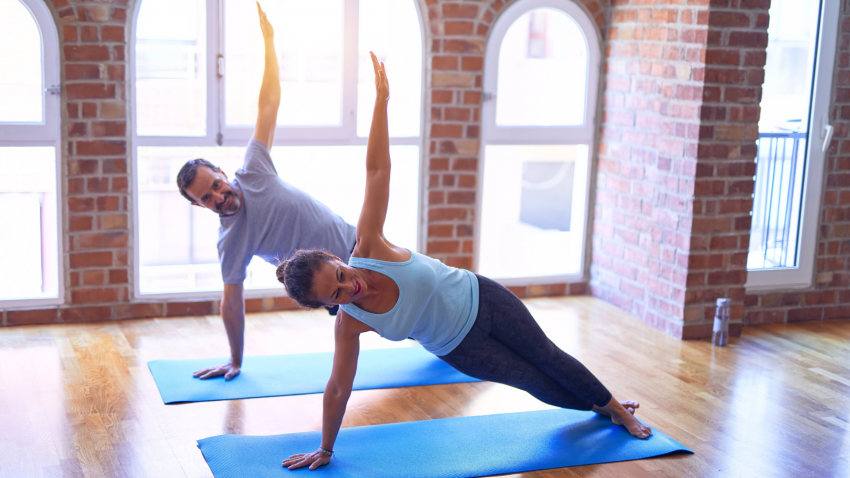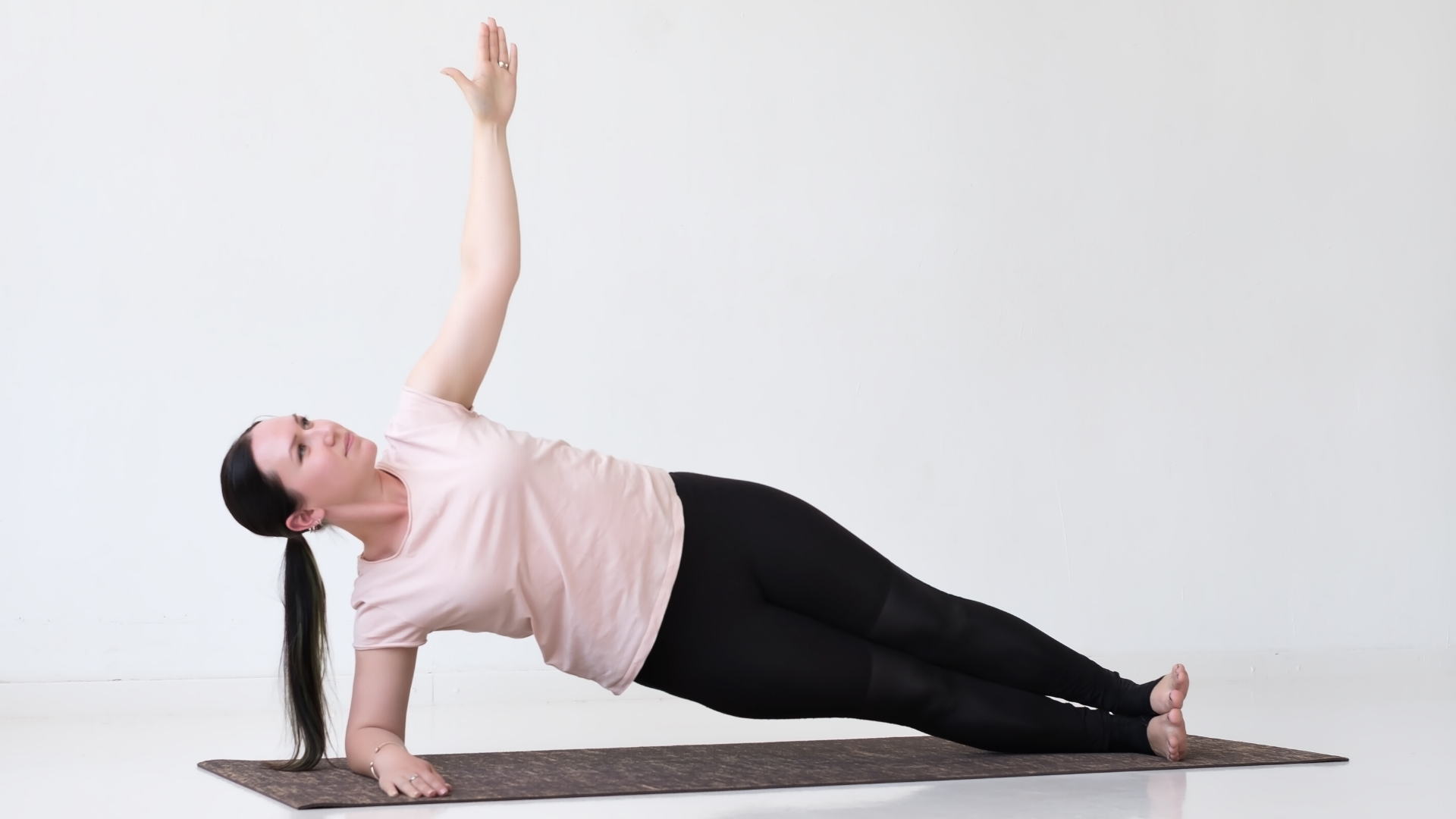View basket (0 items $0.00)

Yoga Pose Primer: Vasisthasana (Side Plank Pose)
If you practice yoga, you probably favor some poses over others. We like the poses that are easy for us as well as the ones that show off our strengths. The others, not so much. At some point in almost four decades of practice, almost every pose that’s been within my reach has held my favorite status for me, at least for a while. Since every pose influences the mind-body differently at life’s different junctures, all yoga’s asanas have fallen in and out of favor for me, sometimes multiple times.
I can safely say that Vasisthasana (Side Plank Pose) is one of the few that has never been a favorite. Perhaps that’s why I practice it. I don’t exactly dislike it, but I practice it because it’s good for me, in the same way that taking cod liver oil is good for the body. Vasisthasana challenges me, and sometimes leaving my comfort zone is far more interesting than doing what feels good.
Vasisthasana is named for the sage Vasistha. Legend has it that he owned Nandini, the “cow of plenty,” who could instantly grant any of his wishes for material riches. Vasistha, a selfless being who wasn’t swayed by the temptations of earthly wealth, employed Nandini’s talents in the interest of generosity to others. Yogic lore contains many stories about covetous greedheads who tried their best to wrest this cow of infinite pleasure away from Vasistha. They were never successful, of course. Vasistha’s selfless virtue always won out.
Vasistha is known for having taught about the happiness of forgoing fleeting material pleasures in favor of an ultimately more satisfying—and far more difficult to attain—happiness that comes with living a simpler, more introspective life.
Like the sage’s chosen life, Vasisthasana, the pose, is quite simple. It is Tadasana (Mountain Pose), the most basic of standing poses, practiced in a different relationship to gravity. But despite its simplicity, practicing Vasisthasana requires strength, balance, and concentration. It also builds them, quite powerfully.
On a physical level, the pose strengthens and tones your abdomen, shoulder girdle, abdomen, low back, gluteal muscles, and legs. It simultaneously strengthens and stretches your wrists. Its strengthening qualities are said to increase confidence, determination, and will power.

How to Practice Vasisthasana
-
Begin in Phalakasana (Plank Pose, arms straight on a nonskid mat). Press your palms into your mat as you lift up through your shoulders.
-
Turn onto the outside of your right foot, stacking your left foot on top of it. Rotate your entire body to face forward. Press your right hand evenly from heel to fingers, inside to outside, into the floor as you raise your left arm up toward the sky.
-
Make sure your pelvis is lifting up, aligned with the rest of your torso rather than sagging toward the floor, a position that can place extra strain on your wrist.
-
Take 5 to 10 deep breaths, simultaneously grounding your right hand as you expand your left arm upward. Return to Plank Pose and repeat on the other side.
-
If your balance feels shaky, place the toes of your top foot on the floor slightly in front of your bottom foot. If your arms are not ready to bear the weight of the rest of your body, try bending the knee of your bottom leg and supporting yourself on your knee, shin and leg. This variation is also appropriate if your wrist is not ready to stretch that far while bearing your weight or if you feel discomfort in the hands or wrists.
-
Another variation for those with sensitive hands or wrists is to practice Vasisthasana supporting yourself on your forearm instead of on your hand. In this case, you can start in Ardha Vasisthasana (Forearm Plank Pose). As you turn to face the torso forward, also rotate your supporting forearm 90 degrees so that it is pointing forward.
The traditional path of yoga is one of renunciation and the freedom that comes from renouncing our addiction to worldly pleasures—material goods and pleasant experiences. It is not, mind you, renouncing the things themselves, but our never-ending dependence on them for our happiness.
Originally, the practice of yoga went against the grain; those who practiced it lived outside the mainstream, giving up the things the rest of society endlessly strived for. Vasisthasana, while it might not be your or my favorite pose, can teach us about the benefits of orienting our lives toward those things that don’t bring instant gratification, but rather a subtler, deeper and more lasting sense of wellbeing.

Charlotte Bell began practicing yoga in 1982 and began teaching in 1986. She was certified by B.K.S. Iyengar in 1989 following a trip to Pune. In 1986, she began practicing Insight Meditation with her mentors Pujari and Abhilasha Keays. Her asana classes blend mindfulness with physical movement. Charlotte writes a column for Catalyst Magazine and serves as editor for Yoga U Online. She is the author of two books: Mindful Yoga, Mindful Life and Yoga for Meditators, both published by Rodmell Press. She also edits Hugger Mugger Yoga Products¹ blog and is a founding board member for GreenTREE Yoga, a non-profit that brings yoga to underserved populations. A lifelong musician, she plays oboe and English horn in the Salt Lake Symphony and the folk sextet Red Rock Rondo whose 2010 PBS music special won two Emmys.
Featured Courses









